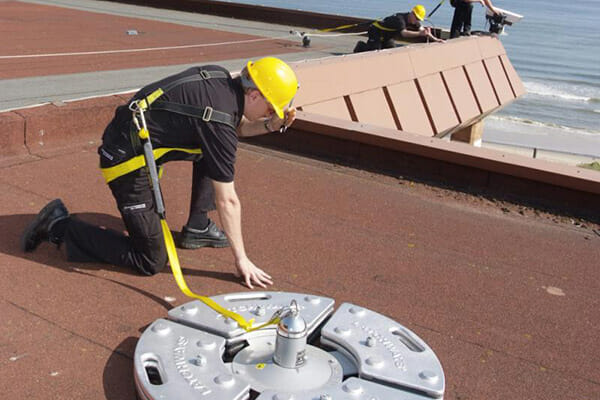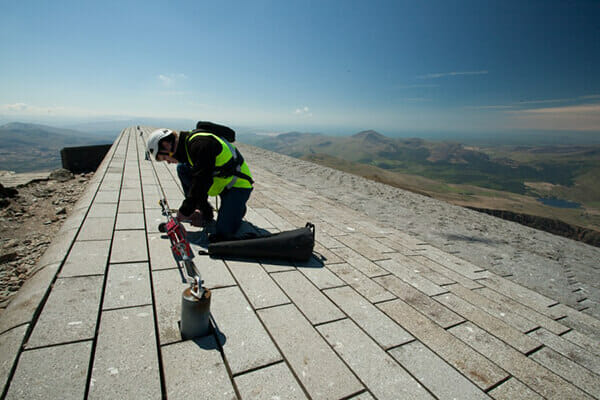Lanyard Pre-Use Inspection, Checks & Examination.
Before each use, every lanyard must be visually and physically inspected by the user. Begin at one end and work methodically to the other, rotating the lanyard to examine the entire circumference.
Below is the recommended inspection procedure for each component type.
1. Hardware Components.
Snaphooks & Connectors (EN 362)
Carefully inspect all snaphooks, karabiners and connectors for:
- distortion of hook or eye
- cracks, dents, corrosion or pitting
- a keeper (gate) that seats properly into the nose
- a keeper that moves freely with no binding or obstruction
- a gate spring with strong closing tension
- a functional locking mechanism that prevents accidental opening
Any connector showing damage must be removed from service immediately.
Thimbles
Check that:
- the thimble sits firmly in the splice eye
- the splice has no loose, broken or cut strands
- the thimble has no cracks, distortion or sharp edges
2. Wire Rope Lanyards.
Always wear gloves when inspecting wire rope lanyards.
Look for:
- broken strands protruding from the rope
- frayed or cut wires
- crushing, flattening or abnormal wear patterns
- corrosion, rust or chemical damage
- inconsistencies in diameter (may indicate shock loading)
Any wire rope showing broken strands should be immediately withdrawn from use.
3. Webbing Lanyards.
Bend the webbing over a round bar or mandrel to expose internal damage.
Inspect for:
- cuts, tears, snags or abrasion
- glazing, stiffness, brittleness or charring
- swelling, discolouration or chemical damage
- broken or loose stitching
- activation of the warning flag (indicates shock absorber deployment)
Tubular web lanyards should be measured to determine if any elongation indicates activation.
4. Rope Lanyards.
Rotate and examine the rope from end to end.
Check for:
- fuzzy, worn, broken or cut fibres
- flattening or changes in diameter (sign of overload)
- heat damage or discolouration
- soft, weak or inconsistent areas after break-in
The rope should have a uniform diameter and feel throughout its length.
5. Shock Absorber Pack.
Inspect the shock pack thoroughly:
- outer cover for cuts, burn marks, abrasion or tears
- stitching attaching the pack to the harness or lanyard
- any signs of deployment or activation
- deformation, contamination or material deterioration
If the shock absorber shows any indication of use or activation, remove it from service.
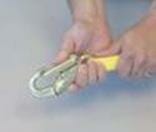
Hardware
Snaps: Inspect closely for hook and eye distortions, cracks, corrosion, or pitted surfaces. The keeper (latch) should seat into the nose without binding and should not be distorted or obstructed. The keeper spring should exert sufficient force to firmly close the keeper. Keeper locks must prevent the keeper from opening when the keeper closes.
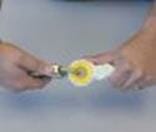
Thimbles:
The thimble must be firmly seated in the eye of the splice, and the splice should have no loose or cut strands. The edges of the thimble must be free of sharp edges, distortion, or cracks.
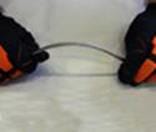
Wire Rope Lanyard
Always wear gloves when inspecting a wire rope lanyard; broken strands can cause injury. While rotating the wire rope lanyard, watch for cuts, frayed areas or unusual wearing patterns on the wire. Broken strands will separate from the body of the lanyard.
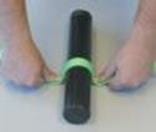
Web Lanyard
While bending webbing over a pipe or mandrel, observe each side of the webbed lanyard. This will reveal any cuts, snags or breaks. Swelling, discoloration, cracks and charring are obvious signs of chemical or heat damage. Observe closely for any breaks in stitching. Inspect lanyard warning flag for signs of activation. Titan tubular lanyards must be measured to determine activation.
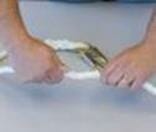
Rope Lanyard
Rotate the rope lanyard while inspecting from end-to-end for any fuzzy, worn, broken or cut fibers. Weakened areas from extreme loads will appear as a noticeable change in original diameter. The rope diameter should be uniform throughout, following a short break-in period.
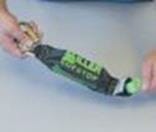
Shock Absorber Pack
The outer portion of the pack should be examined for burn holes and tears. Stitching on areas where the pack is sewn to D-rings, belts or lanyards should be examined for loose strands, rips, deterioration or other signs of activation.


